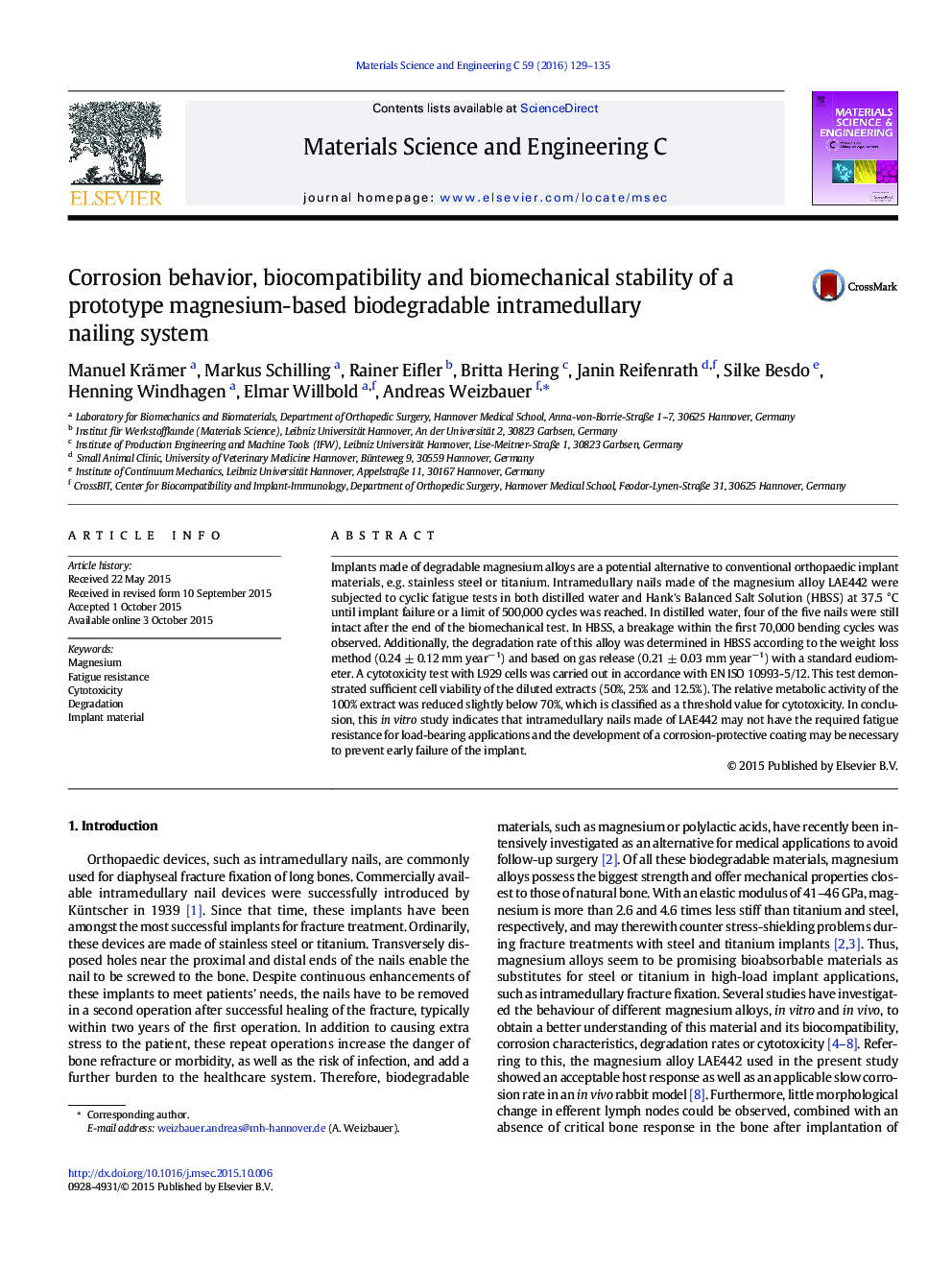| Article ID | Journal | Published Year | Pages | File Type |
|---|---|---|---|---|
| 7868335 | Materials Science and Engineering: C | 2016 | 7 Pages |
Abstract
Implants made of degradable magnesium alloys are a potential alternative to conventional orthopaedic implant materials, e.g. stainless steel or titanium. Intramedullary nails made of the magnesium alloy LAE442 were subjected to cyclic fatigue tests in both distilled water and Hank's Balanced Salt Solution (HBSS) at 37.5 °C until implant failure or a limit of 500,000 cycles was reached. In distilled water, four of the five nails were still intact after the end of the biomechanical test. In HBSS, a breakage within the first 70,000 bending cycles was observed. Additionally, the degradation rate of this alloy was determined in HBSS according to the weight loss method (0.24 ± 0.12 mm yearâ1) and based on gas release (0.21 ± 0.03 mm yearâ1) with a standard eudiometer. A cytotoxicity test with L929 cells was carried out in accordance with EN ISO 10993-5/12. This test demonstrated sufficient cell viability of the diluted extracts (50%, 25% and 12.5%). The relative metabolic activity of the 100% extract was reduced slightly below 70%, which is classified as a threshold value for cytotoxicity. In conclusion, this in vitro study indicates that intramedullary nails made of LAE442 may not have the required fatigue resistance for load-bearing applications and the development of a corrosion-protective coating may be necessary to prevent early failure of the implant.
Related Topics
Physical Sciences and Engineering
Materials Science
Biomaterials
Authors
Manuel Krämer, Markus Schilling, Rainer Eifler, Britta Hering, Janin Reifenrath, Silke Besdo, Henning Windhagen, Elmar Willbold, Andreas Weizbauer,
